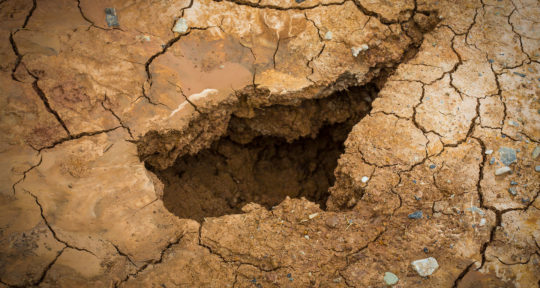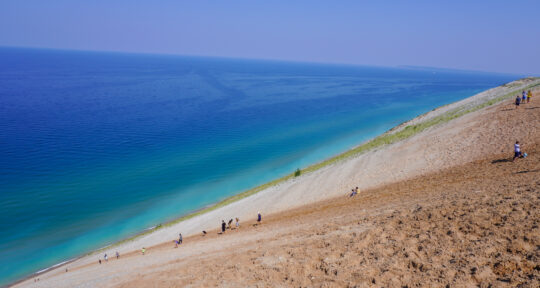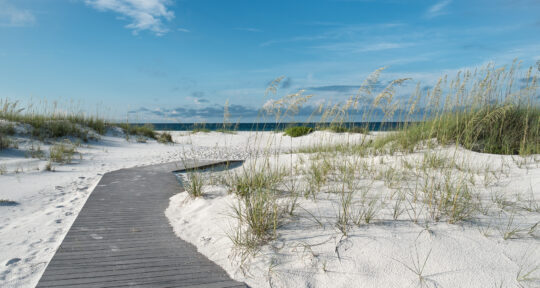Countless surfers flock to Hawai’i’s tropical waters to surf through a coveted tube in a crystal blue wave. For those who prefer an adventure by foot, the Island of Hawai’i offers the unique experience of getting tubed by a more pedestrian adventure, all while keeping your hair dry.
Nāhuku, also known as Thurston Lava Tube, is a 500-year-old pyroduct created by a river of 2,000-degree Fahrenheit lava that once flowed. It has become a popular attraction within Hawai’i Volcanoes National Park for visitors to walk through the 0.5-mile-long cave. With a ceiling height of more than 20 feet in some places, this tube offers an unforgettable peak inside what was once a powerful stream of liquid magma.
The archipelago of Hawaii was born of molten fire. The youngest of these Islands, known as Hawai’i or, more commonly, the Big Island, remains volcanically volatile to this day. Hawaiian deity Pele, the goddess of volcanoes, embodies Hawai’i Volcanoes National Park. On this hike, the lava tube, as well as views of pit crater Kīlauea Iki’s hardened lava lake, serve as reminders of tectonic activity on the still-growing Big Island.
The trail to Nāhuku includes a lush, verdant rainforest, cacophony of birdsong, breathtaking views of pit craters, caves of cooled magma, and native plants harking back to a land before time.
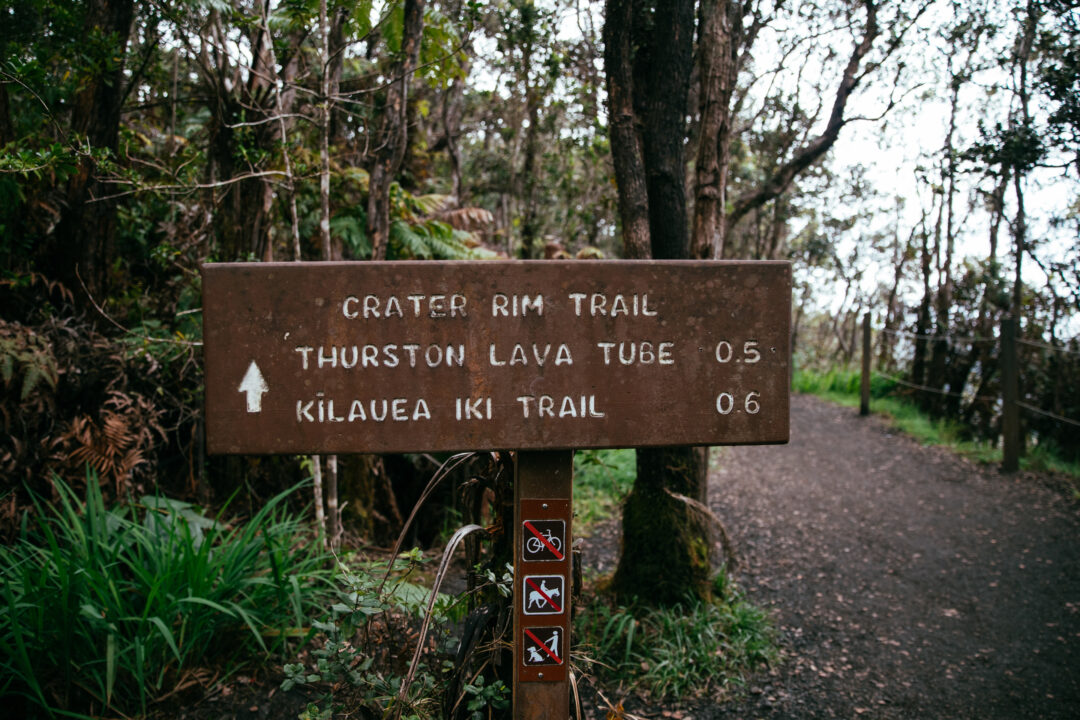
This hike starts from the Kīlauea Iki overview parking lot, beginning with a beautiful trail through a tropical rainforest.
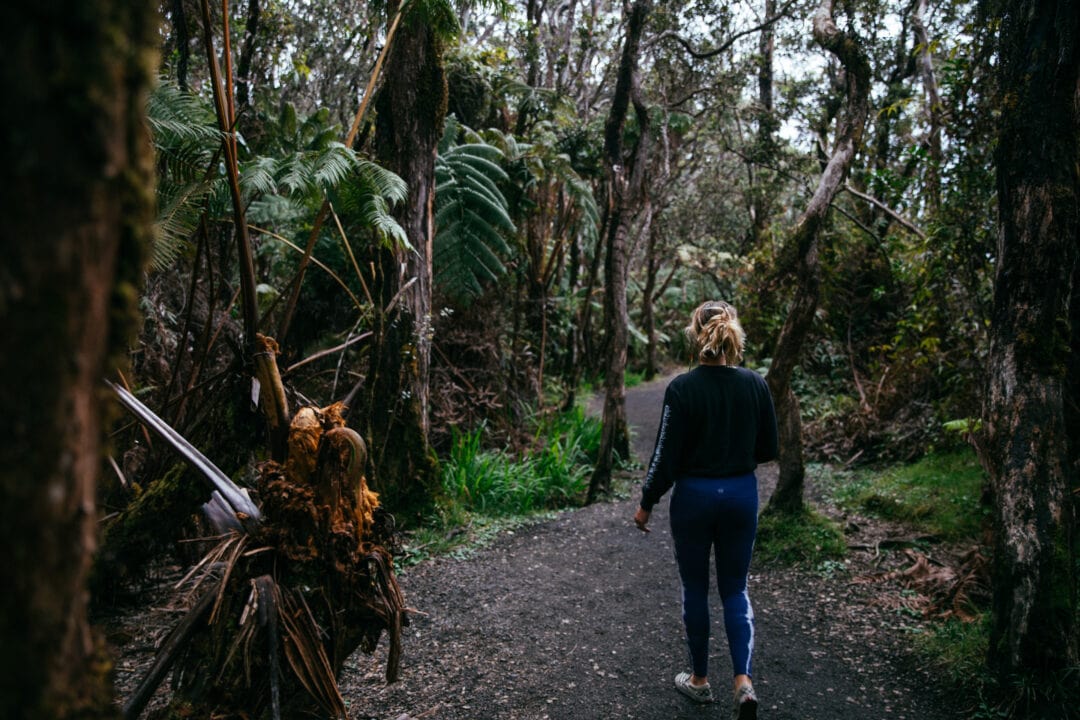
The trail sits 3,900 feet above sea level. Plants that thrive in the forests at this elevation are unique from other parts of the Big Island.
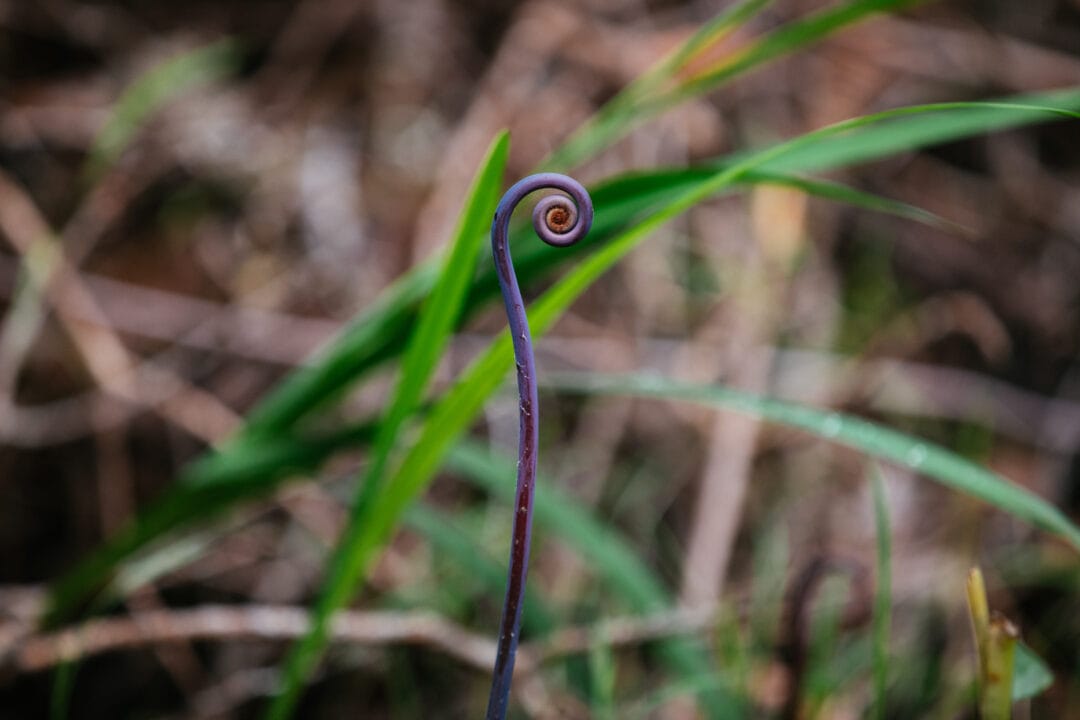
This purple tendril is part of a native, climbing fern known as Uluhe. Some of the plants here look truly prehistoric.
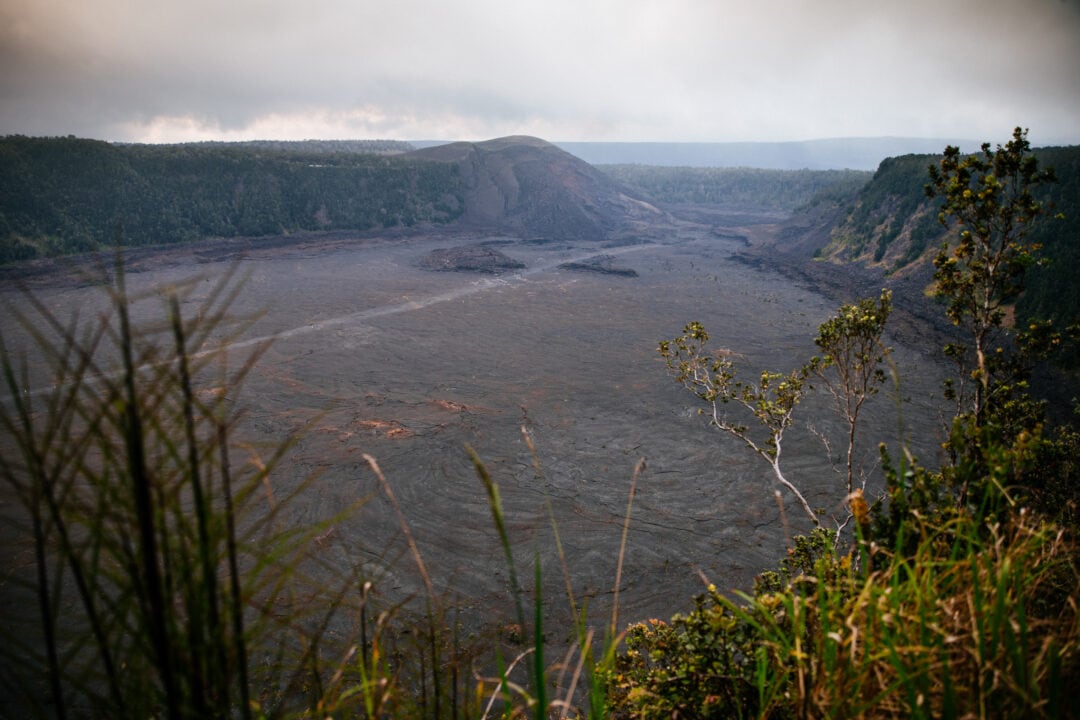
This overview is one of many opportunities to see the pit crater Kīlauea Iki’s hardened lava lake. The park offers a separate trail for an opportunity to walk on the solidified magma below.
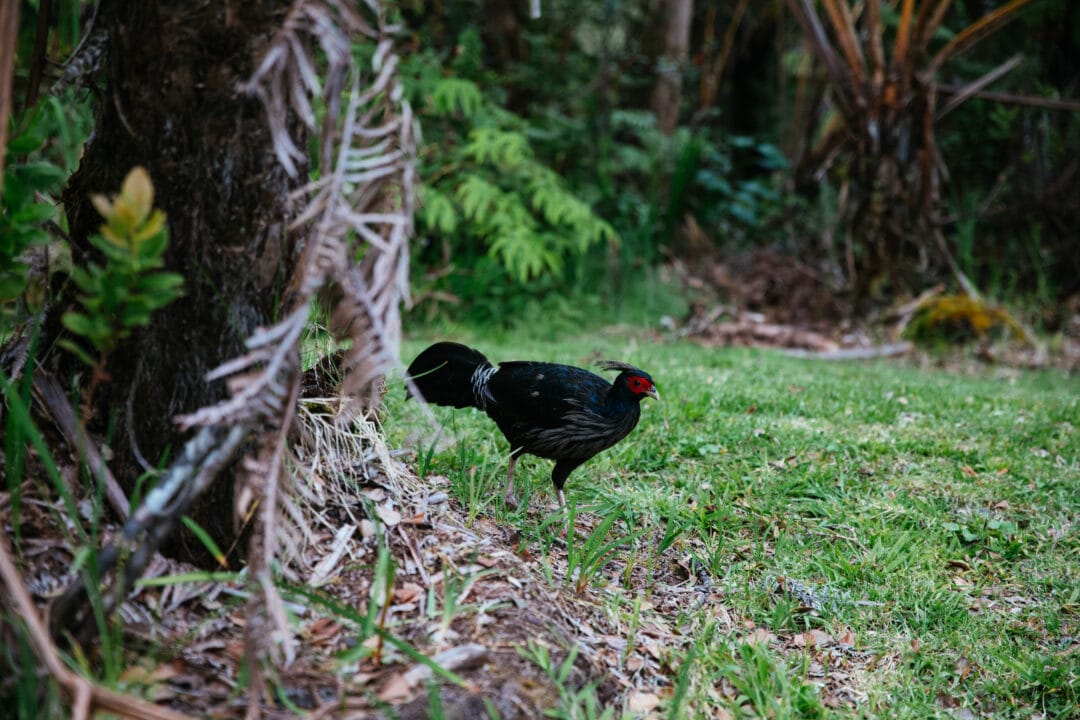
A Kalij pheasant struts his stuff along the trail. This bird is not native to Hawaii; however, a chorus of loud, beautiful songs created by endemic birds are present in this rainforest.
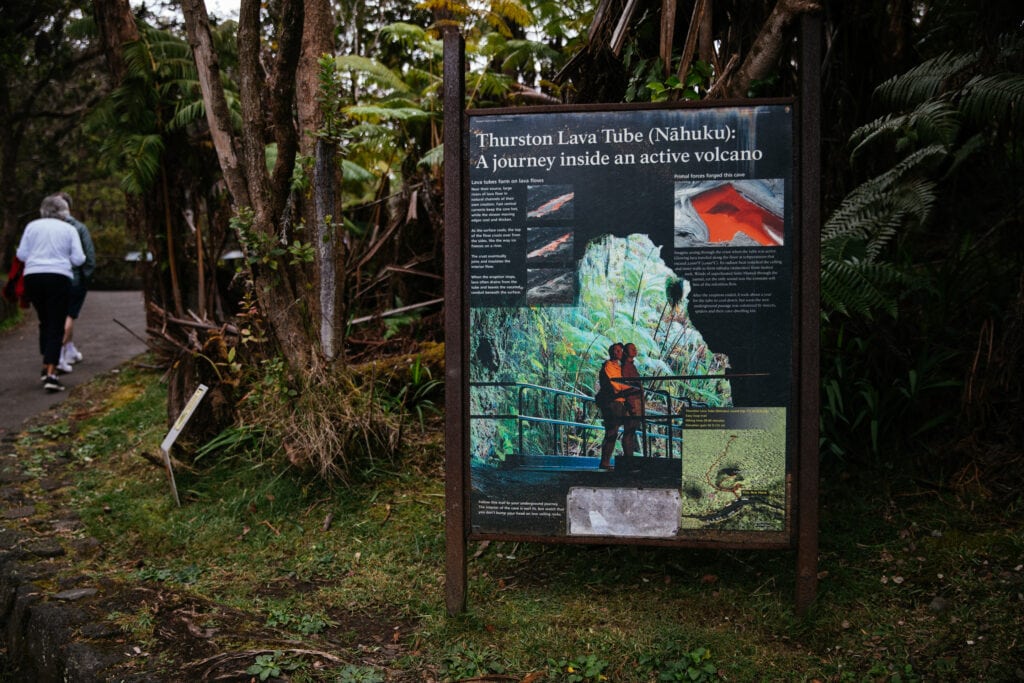
As you approach the entrance, signage explains how lava tubes are formed. The lava flows are fastest and hottest in the center, while the edges and surface of the flow cool on all sides. Once the eruption is over, the molten vacates, leaving behind a hardened tube.
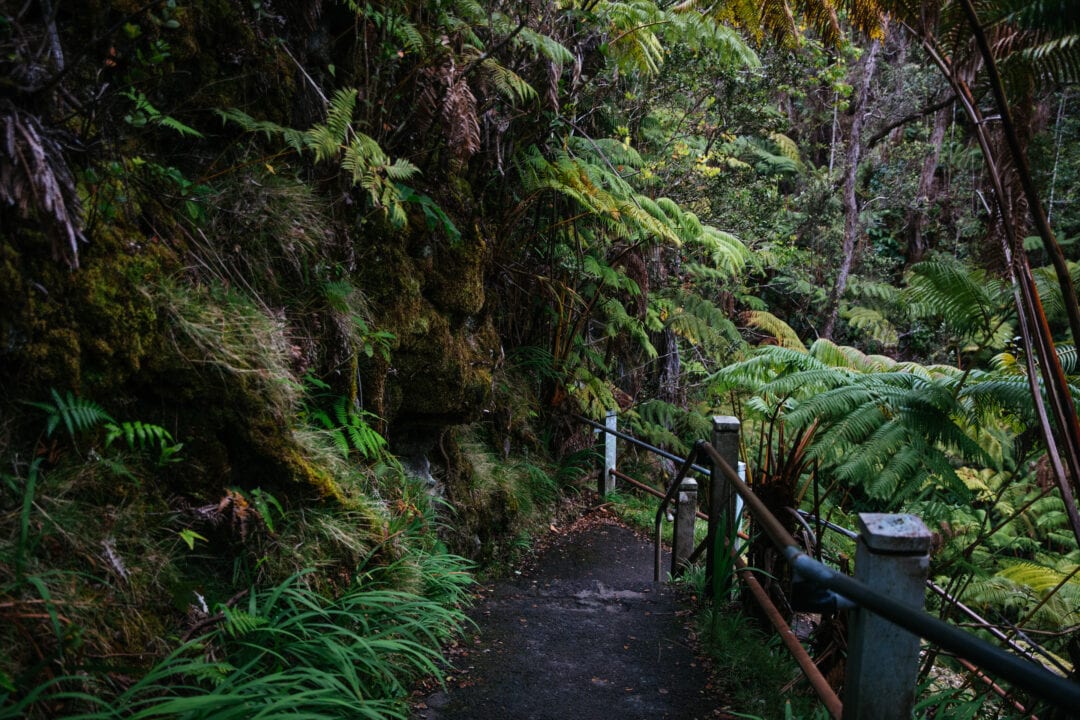
The trail to the opening of the lava tube is paved and includes short sets of stairs and handrails. This makes for a fairly accessible, easy trail through the verdant jungle to be enjoyed by many.
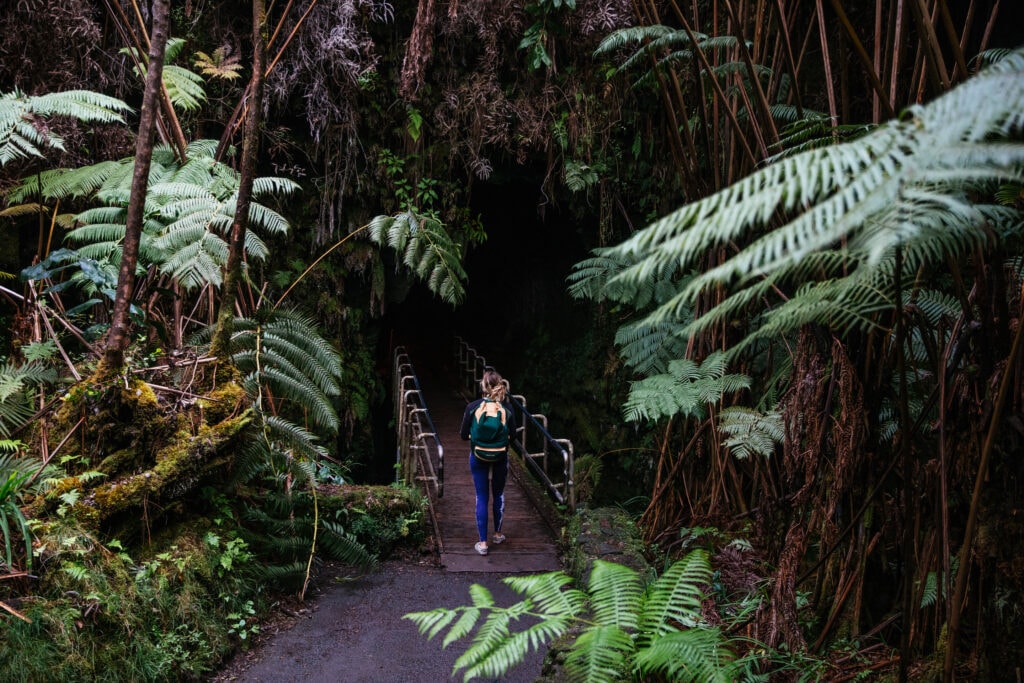
A bridge guides you to the entrance of this dark portal. Inside, ecosystems of small troglodytes have made this cave their home.
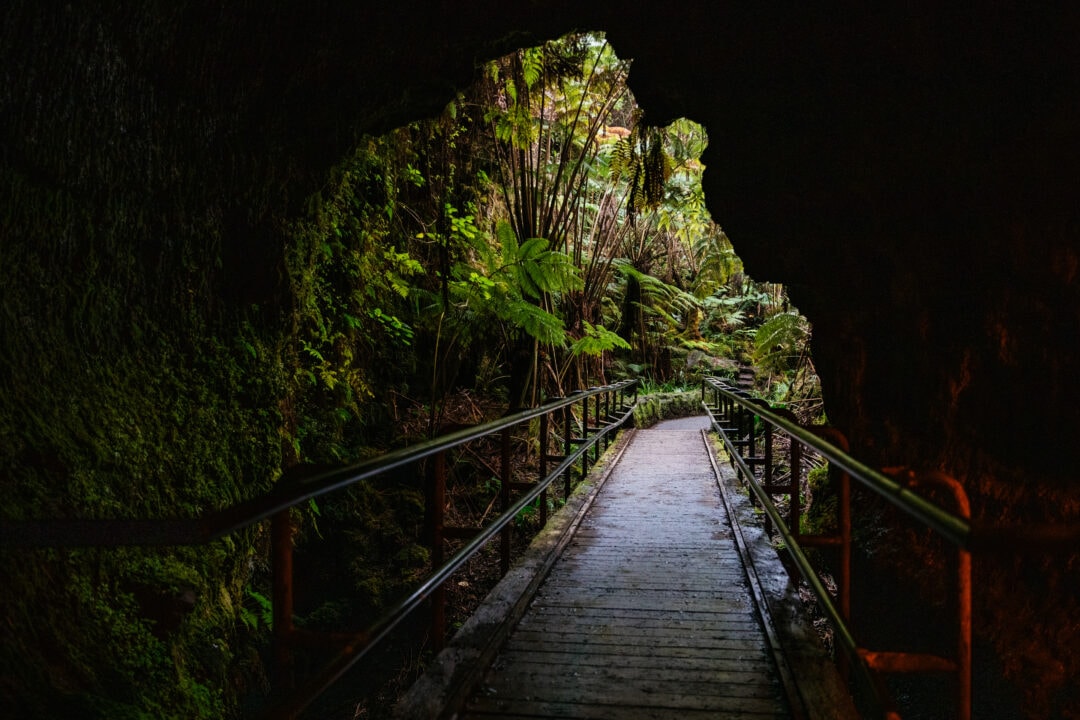
The view from inside the cavern looks back toward an ethereal, tropical rainforest.
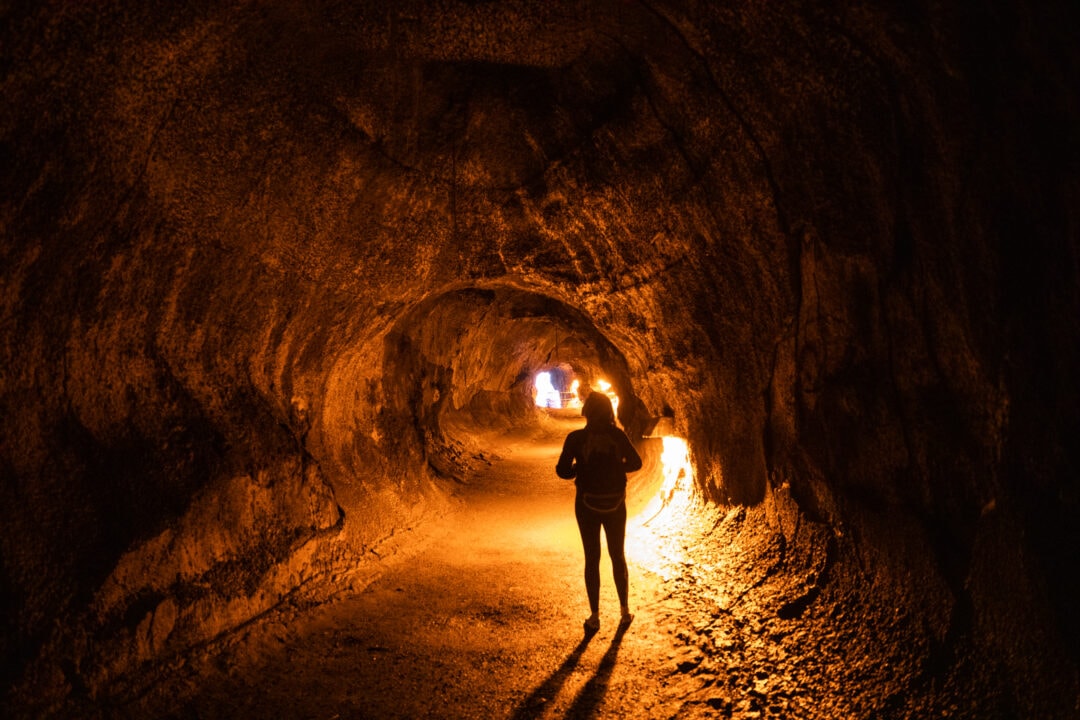
The tube ranges in height. Tall visitors may need to duck in certain places, but other caverns reach 20 feet in height. The end of the tube spits you back into the rainforest.
